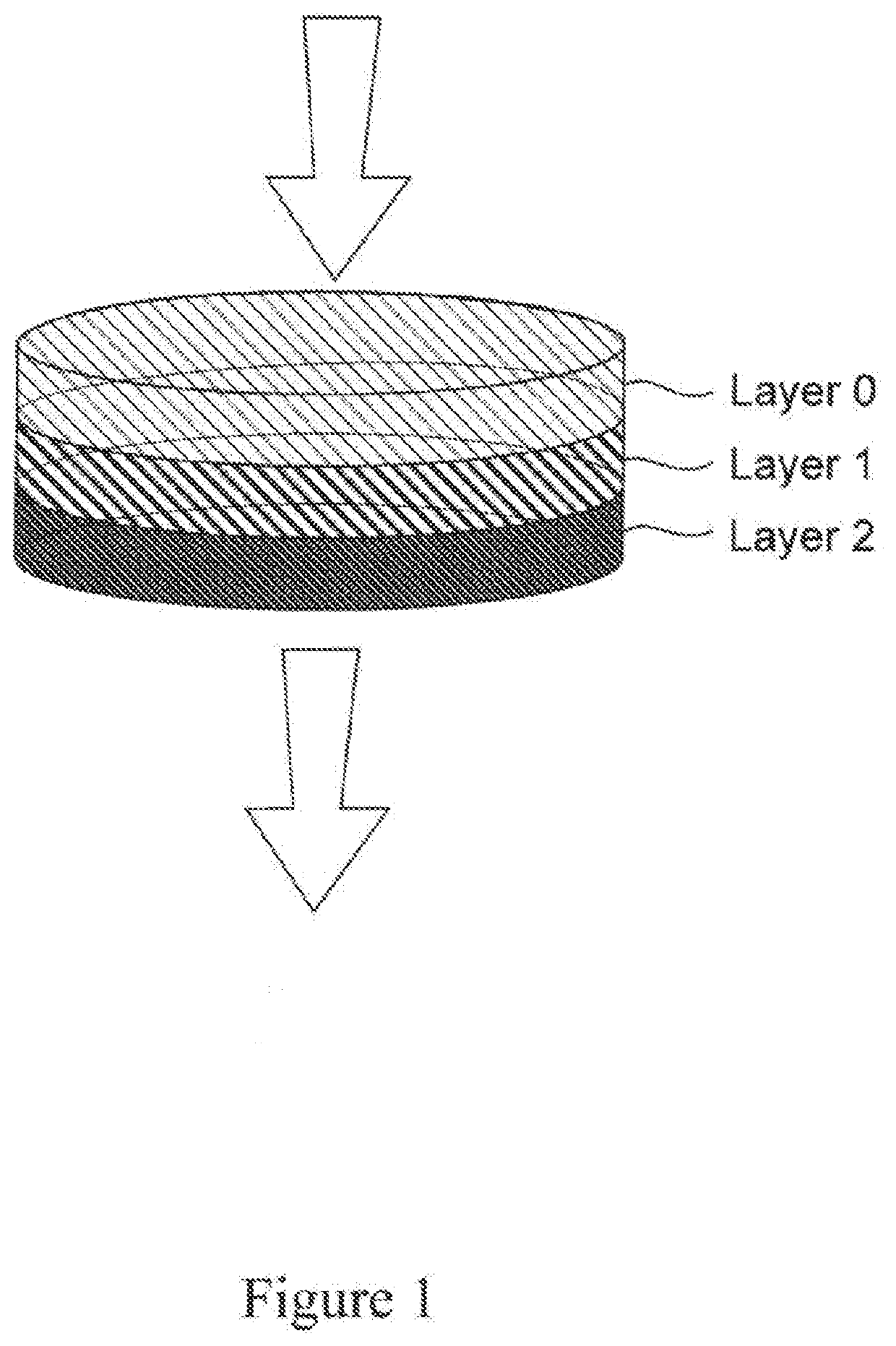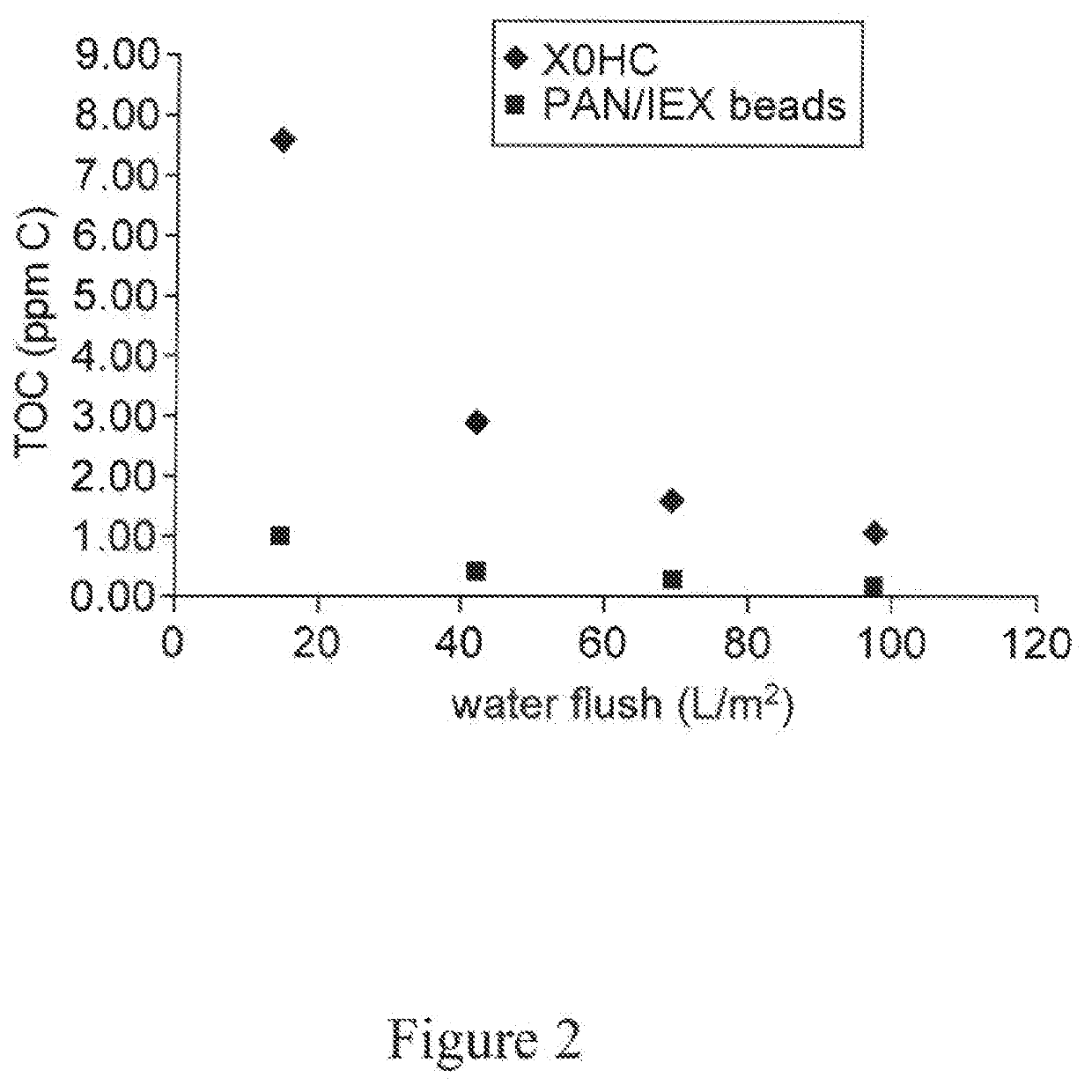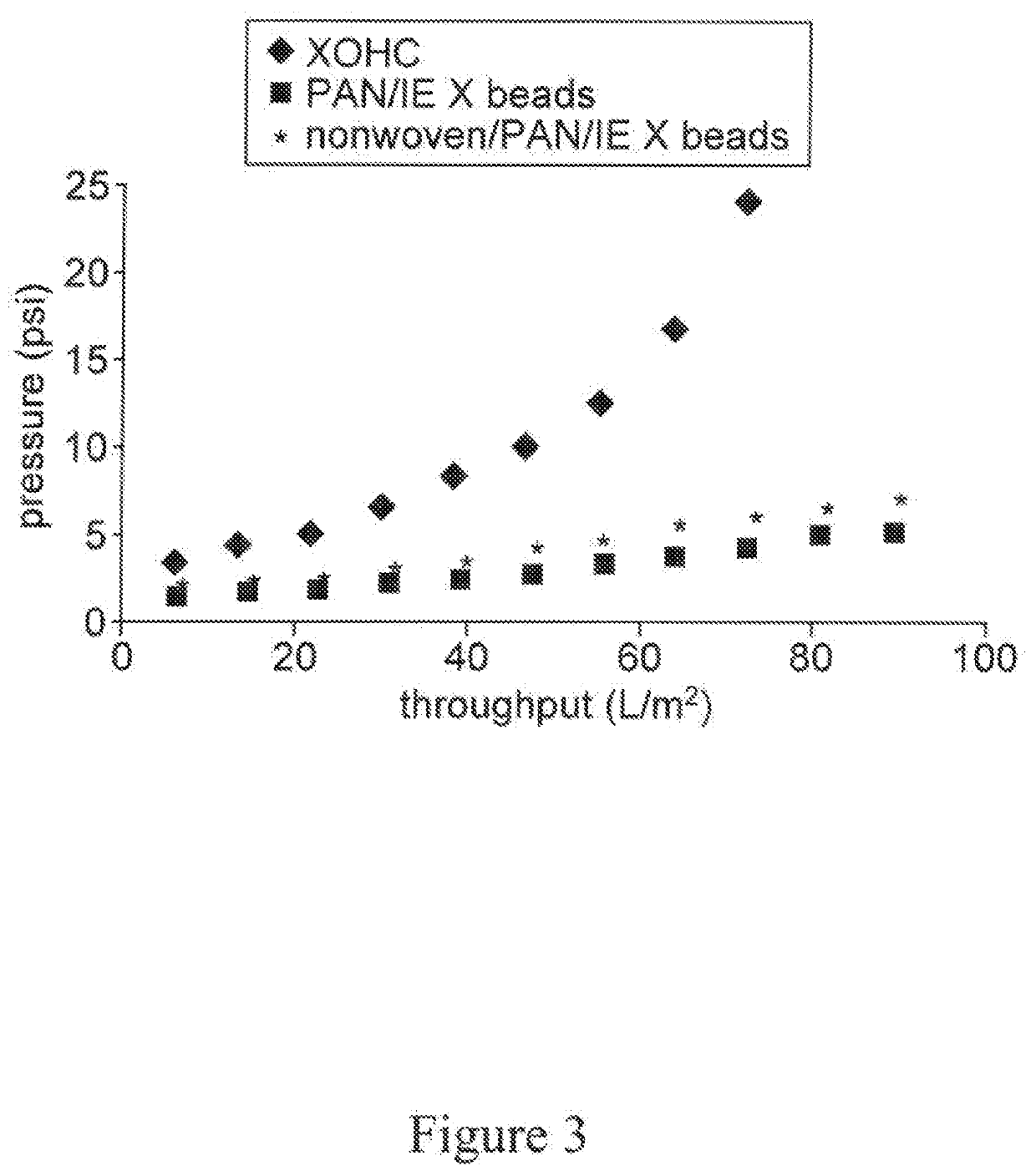High capacity composite depth filter media with low extractables
a composite filter media and low extraction capacity technology, applied in the field of high-capacity depth filter media, can solve the problems of undesirable contaminants, negative impact on extractables, and high levels of aluminum ions in the final product, so as to reduce the amount of water and increase the binding capacity
- Summary
- Abstract
- Description
- Claims
- Application Information
AI Technical Summary
Benefits of technology
Problems solved by technology
Method used
Image
Examples
example 1
[0110]Depth filter compositions, for fine filtration, each having a two (2) layer configuration according to an embodiment of the invention include:
[0111]Filter 1A. polyacrylonitrile (PAN) / silica
[0112]Layer 1: 5.06 g PAN (Sterling Fibers CFF® 111-3 fibrillated pulp, CSF=250 mL), 0.38 g polyaminopolyamide-epichlorohydrin resin (Wet strenght resin C®), 304 mL water, and 3.22 g silica (Sipernat® 120 Evonik Corporation, Parsippany, N.J., USA)
[0113]Layer 2: same as Layer 1
[0114]Blending cycle: 30 s on Soups preset, then 10 Pulses
[0115]Filter 1B. polyacrylonitrile (PAN) / glass
[0116]Layer 1: 8.16 g PAN fibers (Sterling Fibers CFF 114-3, CSF=60 mL), 2.72 g PAN fibers (EFTec™ nanofibrillated fibers A-010-4, CSF=10 mL Engineered Fibers Technology, Shelton, Conn.), 0.48 g polyaminopolyamide-epichlorohydrin resin (Wet strength resin C®), 330 mL water, 3.03 g glass (Poraver® 0.040-0.125 mm, milled to average particle size 12 μm)
[0117]Layer 2: 2.72 g PAN fibers (Sterling Fibers CFF 114-3), 8.16 g ...
example 2
[0133]Depth filter media for coarse filtration according to an embodiment of the invention was prepared on a conventional wet laid media production line using PAN (Sterling Fibers CFF 106-3, CSF=600 mL) and 2.5% polyaminopolyamide-epichlorohydrin resin (Wet strenght resin C®). Samples denoted PAN25 (23 cm2 cutouts) had a basis weight of 711 g / m2, a thickness of 0.40 cm and a water flow rate of 2038 L / min / m2·DSF
example 3
[0134]Depth filter composition, for coarse / medium filtration, having a two (2) layer configuration according to an embodiment of the invention include:
[0135]Filter 3A. polyacrylonitrile (PAN) / glass
[0136]Layer 1: PAN25, as prepared in Example 2
[0137]Layer 2: 5.06 g PAN fibers (Sterling Fibers CFF 106-3), 0.75 g polyaminopolyamide-epichlorohydrin resin (Wet strenght resin C®), 300 mL water, 3.22 g glass (Poraver 1-2 mm, milled to average particle size 26 μm)
[0138]Blending cycle: 30 s on Soups preset, then 10 Pulses
[0139]For comparison purposes, a conventional cellulose / diatomaceous earth depth filter, Millistak+® D0HC, is also presented.
[0140]Characterization of the Depth Filter
ThicknessFilter(cm)3A0.74D0HC control0.74
PUM
| Property | Measurement | Unit |
|---|---|---|
| size | aaaaa | aaaaa |
| size | aaaaa | aaaaa |
| size | aaaaa | aaaaa |
Abstract
Description
Claims
Application Information
 Login to View More
Login to View More - R&D
- Intellectual Property
- Life Sciences
- Materials
- Tech Scout
- Unparalleled Data Quality
- Higher Quality Content
- 60% Fewer Hallucinations
Browse by: Latest US Patents, China's latest patents, Technical Efficacy Thesaurus, Application Domain, Technology Topic, Popular Technical Reports.
© 2025 PatSnap. All rights reserved.Legal|Privacy policy|Modern Slavery Act Transparency Statement|Sitemap|About US| Contact US: help@patsnap.com



